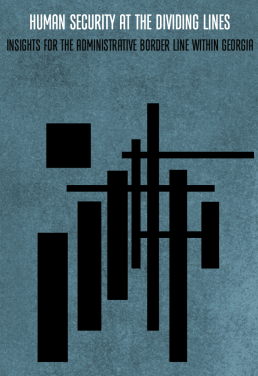საერთო ცხელი ხაზი +995 577 07 05 63


Borders are geographical features, lines drawn on maps that delineate one state from another. Borders are also legal, political, economic and social realities that divide people on each side from each other and define the limits of sovereign responsibility towards the population on its respective side. Where borders are settled, they are features of social and political order that structure every aspect of individual and community life, either directly or indirectly. But when there is disagreement over where a border line should be drawn or who should fall on each side of that line, borders become places of contestation and tension that disturb life for all on both sides.
Contested borderlands between neighbouring states can also become sites of armed confrontation and conflict. Contesting a border is a direct challenge to a state and may be considered an act of aggression, since borders shape the territory by which a state itself is defined. For this reason, the most traditional notions of security—as control of territory by military means—are most visible in contested borderlands. While conventional armed conflicts between states have become relatively rare in the international system since the end of World War 2, contested border zones are more likely than anywhere to become flash points where inter-state conflict threatens both the state and the population that lives in the contested zone.
As states take steps for their national defence, the repercussions for populations can be dire. Indeed, the safety and security of populations in contested border zones tend to suffer not only from the consequences of armed violence and militarized strategies for border security, but also from the limited ability of the state to meet its responsibilities for service provision within these zones. The social, economic and political effects can both weaken the state itself and exacerbate conflict over a border, creating a vicious cycle of violence and destabilisation that negatively affects populations and entrenches conflict.
Human security offers an alternative to the traditional state-based concept of security that makes state sovereignty and national defence conditional on the well-being of people and populations. Human security reorients the security discourse towards a more inclusive, people-centred approach, that puts socio-economic development and defence of human rights at the core of security policy. In this view, the purpose of national defence is protection of the rights and well-being of the population (rather than securing territory). This perspective upends traditional strategic calculations that justify military operations to win territory at the cost of human rights and well-being. A human-security approach to contested border zones thus demands a shift in interests, strategy, and perspective that can open new avenues to conflict resolution while prioritising the safety, prosperity, and human rights of the people most directly affected by border conflicts.
Populations that live on either side of contested borderlands are affected not only by ongoing conflict but also by the inability of the state to meet its obligations to protect rights and provide services that are otherwise foundational aspects of human security. The administrative border lines (ABL) that divide the Republic of Georgia from the self-proclaimed territories of South Ossetia and Abkhazia are one such case. This article will examine the challenges the Republic of Georgia faces in providing human security for populations in these contested zones. Drawing on relevant experiences, laws, and policies from around the world, this article will examine the question of how a state can meet its responsibilities to assure the human security of populations in contested borderland areas.
The website accessibility instruction